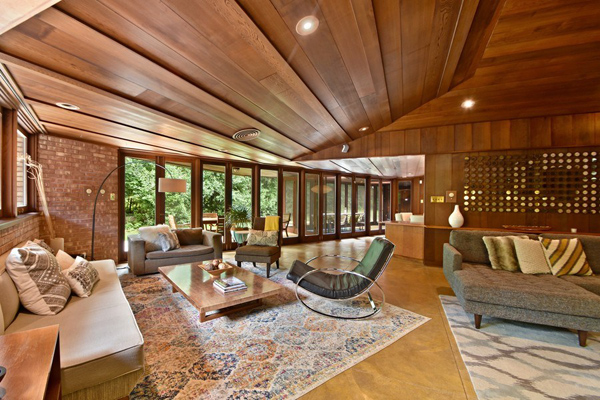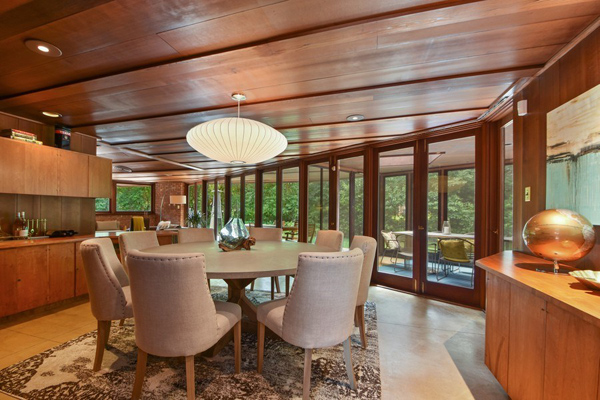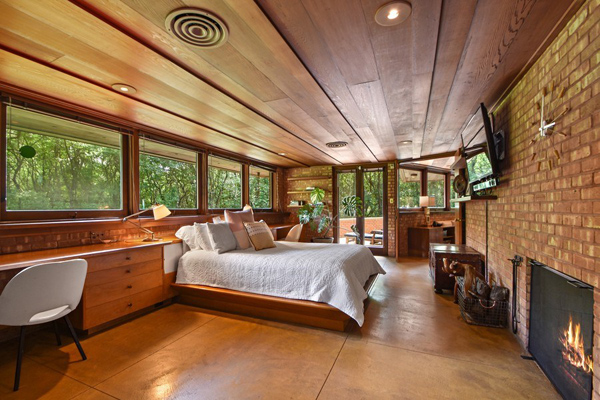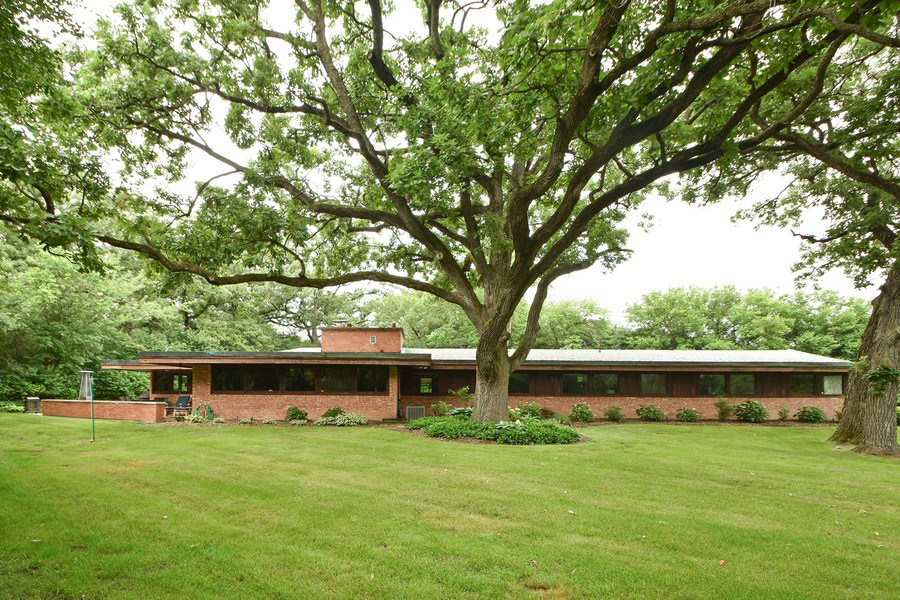A meticulously preserved midcentury home in south suburban Olympia Fields that blends aesthetic characteristics of Frank Lloyd Wright’s organic architecture and modernist minimalism can be had for just $450,000. Dating back to the 1950s, the striking, low-slung house was designed by noted midcentury architect Edward Humrich, says Baird & Warner listing agent Joe Kunkel.
“The original owners pretty much gave him free rein in designing the house,” Kunkel says. “There’s a strong influence from Frank Lloyd Wright with how the house blends into its environment.”

The house is just one of several designed by high-profile modernist architects in the Graymoor subdivision, a suburban residential enclave which was designed to be a tranquil escape from the busy city. According to Kunkel, Graymoor was originally developed without sidewalks and street lights to preserve a feeling of exclusivity and new homes were built only after the approval of a stringent design committee. Architects such as the brothers Keck + Keck, Edward Dart, and John McPherson also designed residences for the prestigious pocket.
Built for Saul and Eleanor Lieberman (the latter being the daughter of Graymoor developer and former Graycor leader Edward Gray), Humrich imagined an earthy home filled with natural materials and views that blend indoor spaces with their surroundings. The house boasts numerous built-ins throughout each room, a spacious three-season room, a series of skylights, two fireplaces, and a water feature which could be used as a koi pond or wading pool.

When the house hit the market for the very first time back in 2005, Jennifer Nickerson said she had to go see it. Growing up around midcentury homes in the North Shore, Nickerson recalls being enchanted by the homes of two friends she regularly visited during childhood.
“When I walked into the house at Graymoor, I got this feeling. I did some research and found out that my friends’ houses growing up were Humrich homes. It felt like it was meant to be.” Nickerson says when making her offer for the house, she wrote Eleanor Lieberman a four-page letter detailing her intentions and appreciation for the home.
.jpg)
Much of the home looks and feels as it did as it was originally envisioned by Humrich, but some necessary updates have been made, Kunkel notes. The main bathroom has been renovated, the electrical system has been updated, and the radiant floor heating and central air conditioning system have both been improved in recent years. However, retro features such as the original intercom and dual ovens remain, offering a glimpse back into the house’s heyday.
While the house is neither landmarked or listed on the National Register of Historic Places, Kunkel suggests that this particular house with its architectural pedigree and time capsule quality interiors could be a candidate for such a designation.

And just as Mrs. Lieberman wanted to see the home go to a preservation-minded buyer, Nickerson says she also plans to continue the tradition, viewing herself as much as a steward as the home’s owner. “Seeing the house purchased by a developer and demolished would crush my heart—I really want to find a buyer who loves and appreciates it.”



